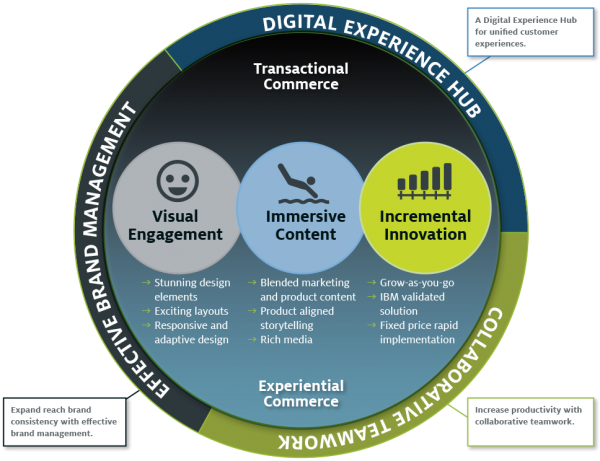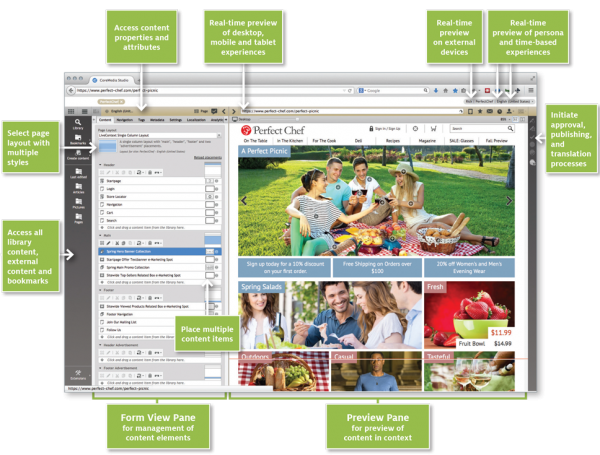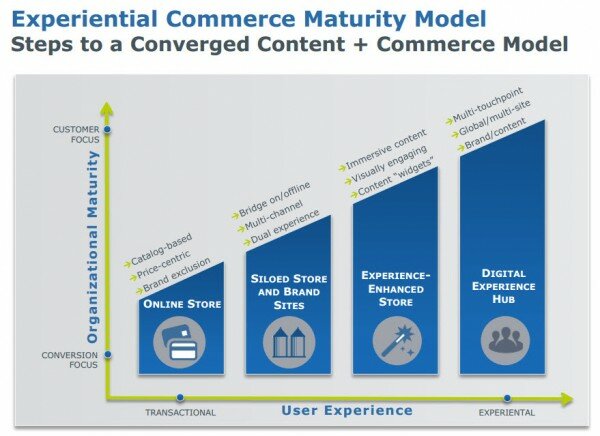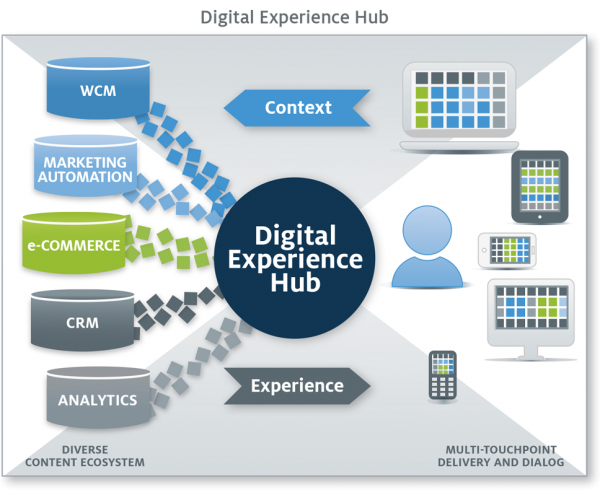CoreMedia LiveContext 2.0 Brings Content Marketing to E-Commerce
by Barb Mosher Zinck | May 13, 2014 10:29 am
It’s called Experiential Commerce and it’s bringing real-time contextual content into IBM e-commerce based websites.
Think about it, we shop online constantly, whether it’s simply looking for information about products, doing product comparison’s or actually making a purchase. And we’ve clearly seen that we do all these activities across the various devices we own. As today’s connected consumer we have expectations that a brand will remember us and make sure our experience is seamless no matter where we are.
But it’s not like that for most brands to. Studies show that brands are struggling to develop omni channel experiences, most are still just trying to get the channel experience solid. E-commerce is one place we see these differences dramatically.
In a conversation with Doug Heise, Product Marketing Director at CoreMedia, he talked about the siloed experience and what needs to change. Heise said that traditional e-commerce has always been about the transaction, but as consumers demand more, this model has needed to evolve and adapt. Heise said he sees a future where they can focus on the brand and store experience in a single place – where product data and marketing content exist together.
It is no longer enough to enable an online catalog and transactional e-commerce: Today’s marketers want to tell brand and product stories through the deep personalization and contextualization of content and interactive digital experiences.” Content And Commerce: The Odd Couple Or The Power Couple? Peter Sheldon and Stephen Powers Forrester Research, Inc
CoreMedia LiveContext 2.0
That is what LiveContext 2.0 enables. Today, CoreMedia announced the latest version of LiveContext which includes a deep integration with IBM WebSphere Commerce (The first version of LiveContext actually integrated with SAP Web Channel Experience Manager). CoreMedia is the first WCM vendor validated for the latest version of WebSphere Commerce.
LiveContext 2.0 offer three specific capabilities:
- Visual engagement
- Immersive Content
- Incremental Innovation
Essentially what this means is that customers of IBM WebSphere can purchase LiveContext to pull marketing content into their e-commerce websites. Through the IBM Commerce Composer, marketers can designate an area for LiveContext content to live. Then through CoreMedia LiveContext they create, edit and manage content from text-based content, to rich media like video.
LiveContext provides visual design via CoreMedia Studio, including layouts and templates, and real-time previews of the webpages. Studio even enables marketers to pull in product catalog content and provides both adaptive and responsive views of the content so marketers can see what their site will look like on different devices. To make it a total end to end experience that the consumer demands, marketers can do more storytelling (which improves the sales experience dramatically in many cases), and integrate earned media.
Creating Experiential Commerce
There are two versions of LiveContext 2.0 and Advanced. LiveContext 2.0 is all about integrating content into the e-commerce website itself (via WebSphere Commerce). The Advanced version, which requires the full implementation of CoreMedia Web Content Management 7.0, provides the ability to pull e-commerce content into other web experiences, creating a hybrid experience.
The advanced version includes personalization and social media via CoreMedia Elastic Social. Heise said you can pay additional money for some personalization and social media in the non-advanced version. But that’s not the big difference between the two – the big difference is the ability to create hybrid experiences that go beyond the e-commerce site and into other brand properties. This relates to the third element of LiveContext – Incremental Innovation. As brands begin to integrate more content into their e-commerce sites, they will start to see what’s possible and where they can go next. This is what Heise called the Experiential Commerce Maturity Model, shown below:
For those who want to take on the advanced approach and build a true digital experience hub, CoreMedia LiveContext offers collaboration and teamwork capabilities in addition to brand management for multi-site implementations.
This move by CoreMedia to bring real content marketing into the e-commerce world is something they have looked at for a while. In a conversation with Heise earlier in the year it was clear they were seeing this convergence across online brand marketing and e-commerce and were working to offer a solution to marry the two technically. CoreMedia has been partners with IBM for many years and according to Heise, “the discovery came from us putting our heads together to come up with the best joint solution for our combined prospects.” While this version of LiveContext is specific to IBM WebSphere Commerce, expect to see that grow to offer other integrations (custom-built or out of the box)
Building the Digital Experience Hub
If you take a few minutes and think about what native advertising is all about, you can see some similarities with what CoreMedia enables through LiveContext. Native advertising is a way for brands to offer their views on topics related to products and services they sell in an non-brand environment, it’s about telling stories to show they understand the issues/needs of consumers. LiveContext pulls similar marketing content into an e-commerce site to give more context/information related to products/services sold.
This content is not necessarily about the product/service itself (think recipes on an e-commerce site selling kitchen aid products, or best dress tips on a clothing retail site), but demonstrated the brand understand the issues/needs that are important to consumers – making it a one-stop shop for information and related products.
It is this type of integration, especially when you move to the more advanced “experiential” approach, integration commerce and content everywhere, that has the potential to challenge native advertising at its core. But even more important, it can change e-commerce at its core – which in my opinion, is a pretty darn good thing.
Share and Enjoy
Source URL: https://digitaltechdiary.com/coremedia-livecontext-2-0-brings-content-marketing-e-commerce/688/





